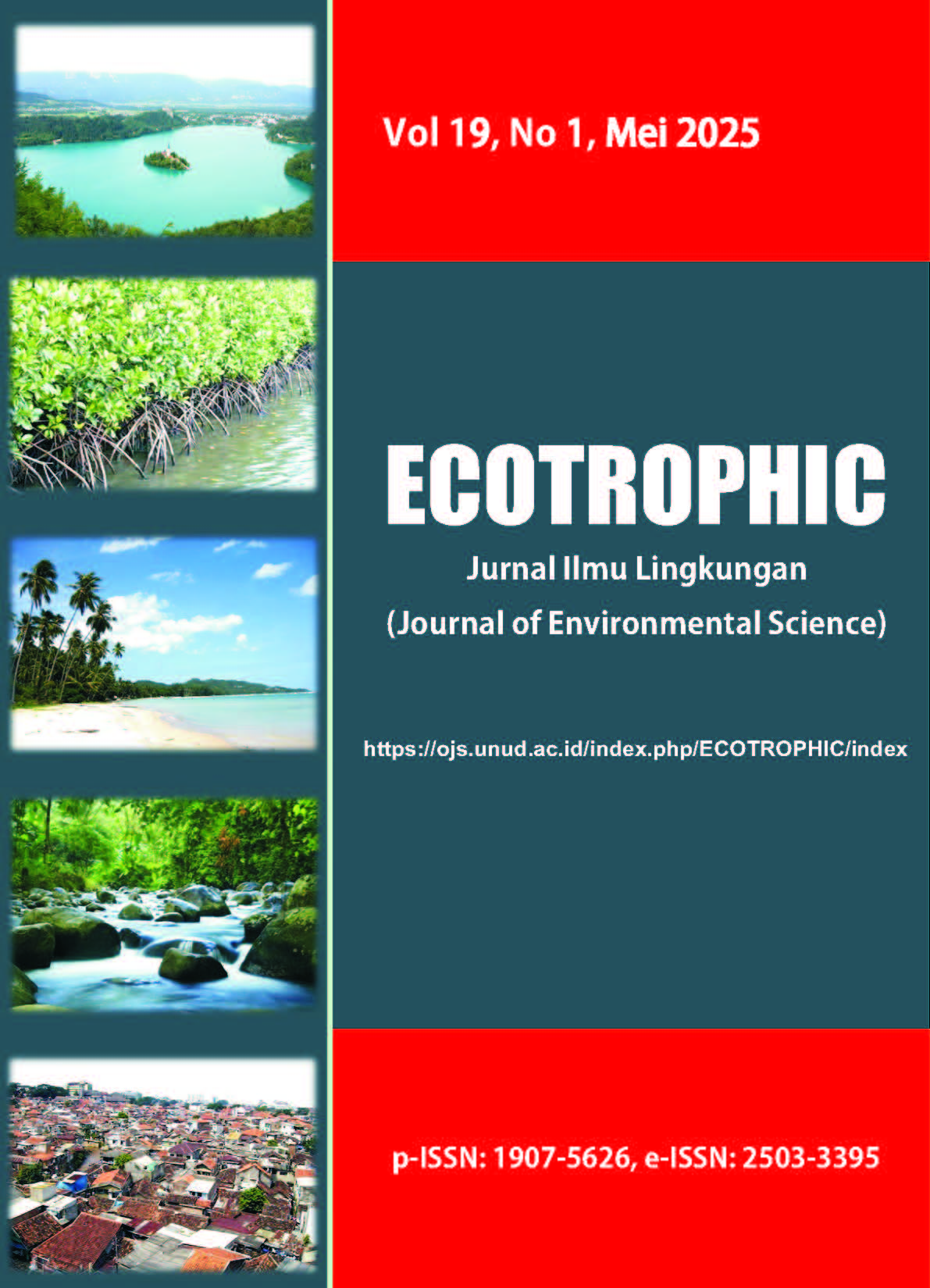IDENTIFIKASI JENIS SAMPAH ANORGANIK PADA EKOSISTEM MANGROVE DI TELUK GILIMANUK, BALI
DOI:
https://doi.org/10.24843/EJES.2025.v19.i01.p10Keywords:
inorganic, Gilimanuk Bay, mangrove, plastic, wasteAbstract
Waste is one of the many problems caused by human activities. The presence of waste can be a threat to the mangrove ecosystem area in carrying out its functions, both ecologically and economically. Pollution of inorganic waste, especially plastic, in the mangrove ecosystem can lead to the death of mangroves and inhibit the survival of biota that live around mangroves. The aim of the research is to determine the characteristics of inorganic waste and abundante based on the amount, weight and density of the waste. The research was conducted in Gilimanuk Bay mangrove area from October to November 2023. The data collection method was purposive sampling with waste identification referring to UNEP (2009). The results of the research conducted show that the types of inorganic waste found in the Gilimanuk Bay Mangrove Ecosystem were plastic waste, foamed plastic, glass, rubber, cloth, metal and other materials. The highest density of inorganic waste was plastic, namely 0.82 items/m2 with the highest relative percentage of 76.21% and the highest density of waste was also plastic (17.24 g/m2). Overall, the mangrove ecosystem in Gilimanuk Bay is dominated by plastic waste among the other types of inorganic waste.

